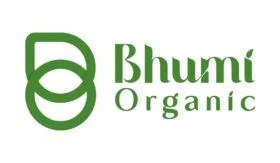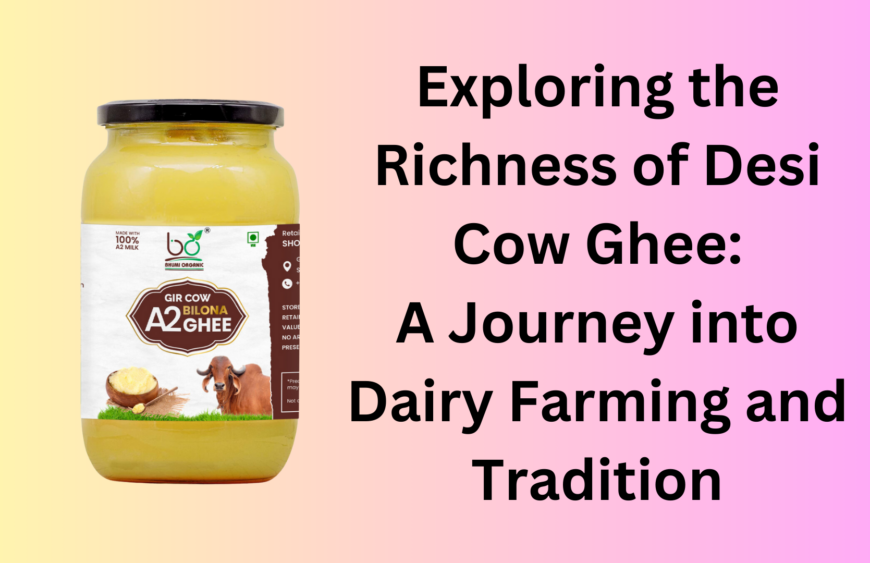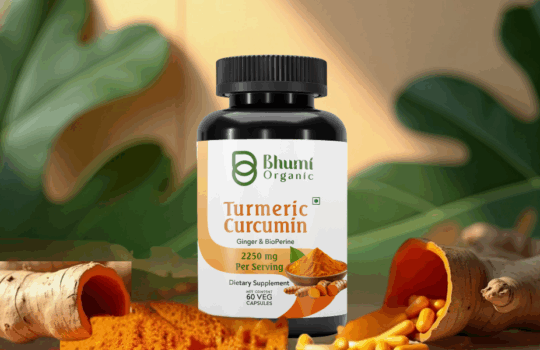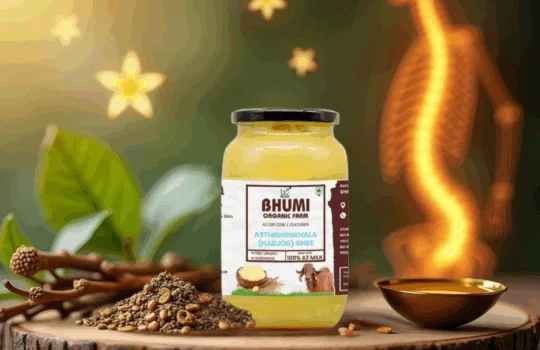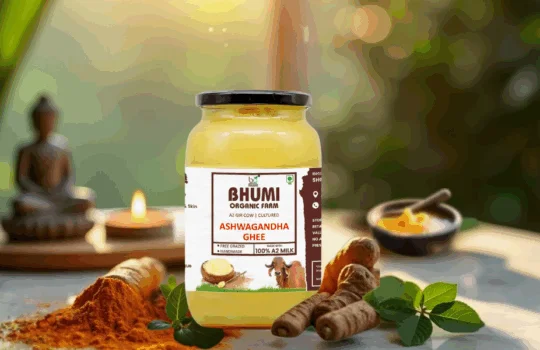In the realm of dairy products, few hold as much cultural significance, nutritional value, and culinary versatility as desi cow ghee. This golden elixir, derived from the rich milk of indigenous cow breeds like the Gir, embodies centuries of tradition, holistic health principles, and sustainable dairy farming practices. In this comprehensive article, we delve into the world of desi cow ghee, exploring its origins, production methods, health benefits, and the role of dairy farms in preserving heritage and promoting well-being.
Unveiling the Essence of Desi Cow Ghee
Desi cow ghee, often referred to simply as ghee, is a clarified butter made from the milk of desi cow breeds. These cows, such as the revered Gir breed in India, are known for their A2 milk, which is believed to have superior nutritional qualities compared to A1 milk from other breeds. The process of making ghee involves simmering butter until the milk solids separate and are removed, leaving behind pure, golden ghee with a rich, nutty flavor and a high smoke point ideal for cooking.
The Heritage of Dairy Farming: Nurturing Gir Breed Cows
Dairy farming, particularly with indigenous cow breeds like the Gir, is a time-honored tradition deeply rooted in agricultural heritage and rural communities. Gir cows, known for their docile nature, adaptability to diverse climates, and high-quality milk production, play a pivotal role in sustaining dairy farms and preserving genetic diversity. The care and management of Gir cows on dairy farms involve a holistic approach that encompasses nutrition, health, and well-being to ensure optimal milk quality and quantity.
From Farm to Table: The Journey of Dairy Farm Dairies
Dairy farm dairies are the heart of desi cow ghee production, where the magic of milk transformation takes place. These dairy farms size ethical practices, sustainable farming methods, and humane treatment of animals to uphold animal welfare standards and environmental stewardship. The journey of dairy farm dairies includes:
- Milk Collection: Gir breed cows are milked using hygienic methods, and the fresh milk is collected and transported to dairy processing facilities.
- Milk Processing: At the dairy, the milk undergoes pasteurization, homogenization, and separation to extract cream, which is then churned to make butter.
- Ghee Production: The butter is slowly simmered to remove water and milk solids, resulting in pure desi cow ghee that retains the natural goodness, flavor, and nutrients of Gir cow milk.
- Quality Assurance: Dairy farm dairies adhere to stringent quality control measures, hygiene standards, and regulatory requirements to ensure the safety, purity, and authenticity of their ghee products.
Health Benefits of Desi Cow Ghee: Nourishment for Body and Soul
Desi cow ghee is revered not just for its rich taste and culinary applications but also for its potential health benefits. Some of the notable advantages of including desi cow ghee in your diet include:
- Nutritional Powerhouse: Desi cow ghee is a source of essential fatty acids, vitamins A, D, E, and K, and antioxidants, offering a nourishing boost to overall health and well-being.
- Digestive Aid: The healthy fats in desi cow ghee are believed to aid digestion, promote gut health, and support nutrient absorption, making it a staple in Ayurvedic and holistic wellness practices.
- Energy and Vitality: The medium-chain triglycerides (MCTs) in desi cow ghee provide a readily available source of energy, stamina, and endurance, making it a favorite among athletes and active individuals.
- Anti-Inflammatory Properties: Studies suggest that desi cow ghee may have anti-inflammatory effects, potentially benefiting conditions like arthritis, inflammation, and immune-related disorders.
- Cognitive Support: The presence of omega-3 fatty acids and nutrients in desi cow ghee is linked to cognitive function, brain health, and memory enhancement, making it a brain-boosting addition to your diet.
Preserving Heritage: The Significance of Gir Breed Cows
The Gir breed of cows holds a special place in the cultural fabric of India and beyond, symbolizing resilience, purity, and agricultural heritage. These cows, known for their distinctive hump, lyre-shaped horns, and gentle disposition, have been integral to traditional farming practices, dairy production, and cultural festivities for generations. Preserving the genetic lineage, biodiversity, and ecological balance through sustainable breeding and conservation efforts ensures the legacy of Gir breed cows for future generations.
The Impact of Dairy Farming on Rural Economies and Sustainability
Dairy farming, particularly with indigenous cow breeds like the Gir, plays a vital role in rural economies, livelihoods, and sustainable agriculture. By supporting local dairy farms, consumers contribute to:
- Livelihoods: Dairy farming provides employment opportunities, income generation, and economic stability for rural communities, farmers, and dairy workers.
- Biodiversity: Indigenous cow breeds like the Gir contribute to genetic diversity, ecosystem resilience, and sustainable farming practices that promote biodiversity conservation.
- Environmental Benefits: Sustainable dairy farming practices, such as organic farming, agroforestry, and waste management, promote soil health, water conservation, and climate resilience, contributing to environmental sustainability.
- Community Empowerment: Dairy farming fosters community cohesion, knowledge sharing, and social empowerment, strengthening rural economies and fostering a sense of pride in agricultural heritage.
Embracing Tradition: Culinary Delights with Desi Cow Ghee
In the culinary world, desi cow ghee reigns supreme as a versatile ingredient that enhances flavors, imparts richness, and elevates dishes to new heights. Here are some traditional and contemporary culinary uses of desi cow ghee:
- Cooking Medium: Use desi cow ghee as a cooking medium for sautéing, frying, roasting, and deep-frying, adding a deliciously nutty aroma and golden hue to your recipes.
- Flavor Enhancer: Add a spoonful of desi cow ghee to rice, dals, curries, and soups to enrich the flavors, impart a silky texture, and create a satisfying mouthfeel.
- Baking and Desserts: Incorporate desi cow ghee into baked goods, pastries, and desserts for a buttery richness, moist texture, and delectable taste that pairs well with sweet and savory ingredients alike.
- Ayurvedic Elixir: In Ayurveda, desi cow ghee is revered as a medicinal ingredient used in herbal formulations, wellness tonics, and Ayurvedic remedies for promoting digestive health, immunity, and overall vitality.
- Nutritional Booster: Drizzle desi cow ghee over steamed vegetables, salads, and grain bowls as a nutritional booster, enhancing nutrient absorption and adding a flavorful finishing touch.
The Evolution of Dairy Farming: Innovations and Sustainability
As dairy farming evolves, innovations, technologies, and sustainable practices play a crucial role in shaping the future of the industry. Some notable trends and advancements include:
- Organic Farming: The shift towards organic dairy farming practices emphasizes natural inputs, pasture grazing, and animal welfare standards, aligning with consumer preferences for organic, ethically sourced dairy products.
- Technology Integration: Dairy farms are adopting digital technologies such as IoT (Internet of Things) sensors, data analytics, and automation to improve herd management, optimize feed efficiency, monitor animal health, and enhance overall farm productivity.
- Value-Added Products: Dairy farms are diversifying their product offerings by creating value-added dairy products like flavored ghee variants, probiotic-rich yogurts, artisanal cheeses, and specialty milk products tailored to consumer preferences and market trends.
- Sustainable Practices: Embracing sustainable farming practices, renewable energy sources, water conservation measures, and waste management strategies helps dairy farms minimize their environmental footprint, reduce carbon emissions, and promote eco-friendly operations.
- Community Engagement: Dairy farms are engaging with local communities through educational programs, farm tours, agritourism activities, and farmer’s markets, fostering transparency, consumer trust, and community support for sustainable agriculture.
Navigating the World of Desi Cow Ghee: Choosing Quality and Authenticity
When selecting desi cow ghee products, consider the following factors to ensure quality, authenticity, and ethical sourcing:
- Source of Milk: Choose desi cow ghee made from milk sourced from indigenous cow breeds like the Gir, ensuring A2 milk quality and adherence to traditional dairy farming practices.
- Organic and Non-GMO: Look for desi cow ghee products that are certified organic, non-GMO, and free from artificial additives, preservatives, or synthetic hormones for a pure and natural product.
- Artisanal Production: Opt for artisanal desi cow ghee produced in small batches using traditional methods, hand-churned butter, and slow simmering techniques to preserve flavor, nutrients, and authenticity.
- Transparency and Traceability: Seek brands or dairy farms that offer transparency about their sourcing, production methods, sustainability practices, and ethical standards, providing traceability from farm to table.
- Customer Reviews: Consider customer reviews, testimonials, and feedback from verified buyers to gauge product quality, taste preferences, packaging, and overall satisfaction with desi cow ghee products.
https://bhumiorganicfarm.com/product-category/shop/ghee
Supporting Sustainable Dairy Farming: Consumer Choices Matter
As consumers, our choices have a significant impact on shaping the future of dairy farming, sustainability, and animal welfare. By supporting sustainable dairy practices, ethical sourcing, and indigenous cow breeds like the Gir, we contribute to:
- Animal Welfare: Encouraging humane treatment, pasture grazing, and natural living conditions for cows, promoting their well-being, health, and happiness on dairy farms.
- Ecosystem Conservation: Preserving biodiversity, native flora and fauna, soil health, and water resources through sustainable farming practices that prioritize environmental stewardship and conservation.
- Rural Livelihoods: Supporting rural economies, small-scale dairy farmers, and local communities by choosing locally sourced, ethically produced dairy products that uphold fair labor practices and economic empowerment.
- Cultural Heritage: Honoring agricultural traditions, indigenous knowledge, and cultural heritage associated with desi cow breeds, dairy farming rituals, and culinary legacies rooted in regional cuisines and traditions.
Conclusion: Embracing the Legacy of Desi Cow Ghee and Dairy Farming
In conclusion, desi cow ghee represents more than just a culinary ingredient—it embodies a legacy of tradition, sustainability, and cultural heritage deeply intertwined with dairy farming practices, indigenous cow breeds, and culinary excellence. By exploring the richness of desi cow ghee, understanding its health benefits, and supporting sustainable dairy farming, we embrace a holistic approach to nourishing our bodies, preserving our planet, and honoring agricultural legacies.
As we savor the golden hues, aromatic flavors, and nutritional goodness of desi cow ghee in our kitchens, let us also celebrate the dedication, craftsmanship, and passion of dairy farmers who uphold timeless traditions, ethical practices, and environmental stewardship in their pursuit of excellence. Through mindful choices, informed consumption, and a shared appreciation for the richness of nature’s bounty, we embark on a journey that nourishes both body and soul, connecting us to the essence of desi cow ghee and the legacy of dairy farming for generations to come.
